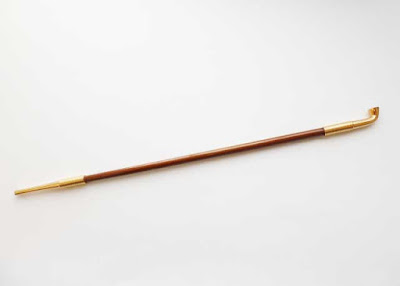The history of tobacco and bamboo pipes in Japan

??
Tobacco entered Japan in the Momoyama Period (1568-1600) through the Portuguese.
Tobacco was smoked using a bamboo pipe with a fine metal fitting on either end. Though cigarettes rapidly gained popularity at the turn of the 19th century, kiseru bamboo pipes are occasionally still used by some people.
Kyoto and Tokyo were both important centers for the production of kiseru or bamboo tobacco pipes until World War II. Kiseru pipes made in Kyoto were prized as the best throughout Japan.
Although they are no longer commonly used for smoking tobacco, they are still highly valued as curios or antiques. Kiseru usually have three parts: a bowl and a mouthpiece made of gold, silver or brass, and a long stem made from high quality bamboo.
These bamboo stems were often dyed red, black or amber, some were painted by hand. The bamboo (prepared by boiling and drying) used for these pipes is called shinobe and comes from Hakone in Shizuoka Prefecture.
Shinobe also absorbs nicotine well. In the 1990's shinobe bamboo became virtually extinct in Shizuoka Prefecture due to massive golf course development and other land clearance. Now all remaining bamboo pipes are made from stock materials.
Find out more about the history of tobacco in Japan at the Tobacco & Salt Museum in Tokyo.
If you wish to source and purchase kiseru pipes or any other item from Japan please contact us at GoodsFromJapan.com
© JapanVisitor.com
...
Fuente de la noticia:
japan visitor
URL de la Fuente:
http://japanvisitor.blogspot.com/
| -------------------------------- |
| How to Make Friends in Japan: Shared Living in Tokyo! |
|
|





